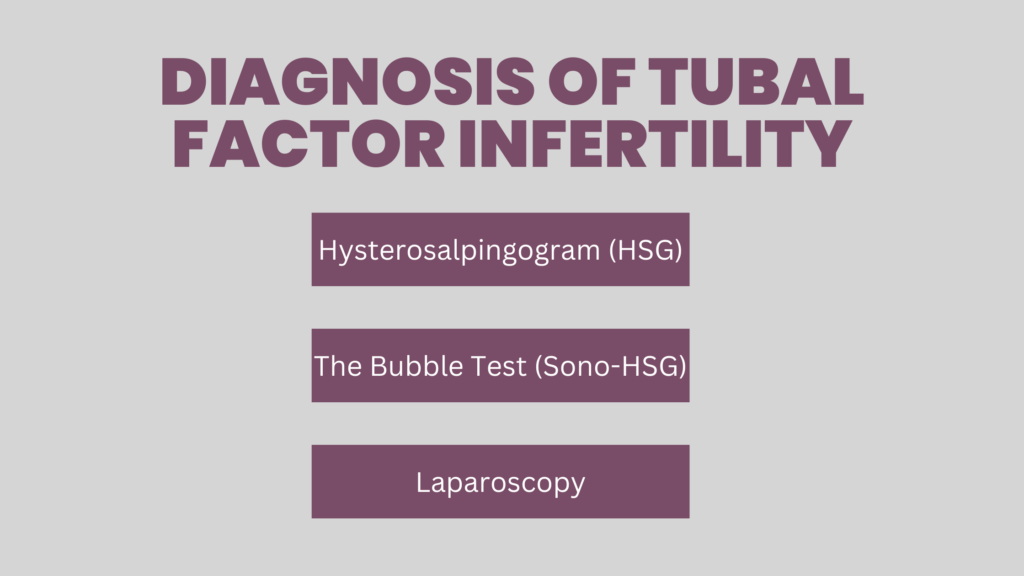Think of your fallopian tubes as nature’s express highway system – they’re the crucial pathways that help eggs and sperm meet up for their all-important rendezvous.
The ovaries release the mature egg, and sperm, if present at the right time, race through the fallopian tube to meet the egg.
But what if there’s a traffic jam or a barrier on this pathway?
That’s where tubal factor infertility enters the picture, and it’s more common than you might think.
So, let’s debrief it!
Table of Contents
What Does Tubal Factor Infertility Mean?
When the fallopian tubes become blocked, damaged, or have some growth that obstructs the pathway for sperm or egg, it’s known as tubal factor infertility. Tubal factor infertility is actually responsible for about 25-30% of all infertility cases – that’s no small number!
For sperm, it’s kind of like a mini-operation, where they have to carefully navigate through narrow passages. And our fallopian tubes? they need to be clear and functioning for successful conception.
These tubes aren’t just passive tunnels; they’re more like a sophisticated transport system that provides both the route and the right environment for the egg and sperm to meet, and for the resulting embryo to make its way to the uterus.
When something interferes with this process, it’s like having a GPS malfunction on your fertility journey.
How is Tubal Factor Infertility Diagnosed?

Diagnosing tubal factor infertility involves several different tests, each providing important information about your fallopian tubes’ structure and function.:
1. Hysterosalpingogram (HSG)
This is typically the first test your doctor will recommend.
During an HSG:
- A special dye is gently introduced through your cervix into your uterus
- X-ray images are taken as the dye moves through your reproductive system
- The test shows whether the tubes are open and allows doctors to see their shape and structure
- The procedure takes about 15-30 minutes and can be done in a radiology clinic
- Some women experience mild cramping, which can be reduced with over-the-counter pain medication
- The test is usually scheduled shortly after your period ends
This shows doctors exactly where any blockages might be, and can also identify:
- Complete or partial tube blockage
- Abnormal tube shape
- Scarring around the tubes
- Problems within the uterine cavity
2. The Bubble Test (Sono-HSG)
This is a newer, radiation-free alternative that uses ultrasound and either saline with air bubbles or special contrast.
It’s like watching tiny biological submarines navigate through your tubes in real-time, while the ultrasound probe tracks the movement of these bubbles. The test can simultaneously evaluate your uterine cavity and ovaries as well. And as a bonus: there’s no radiation exposure!
3. Laparoscopy
This is the gold standard for diagnosing tubal factor infertility. Here’s how the procedure goes:
- It’s performed under general anesthesia in an operating room
- Small incisions are made in your abdomen
- A thin camera provides direct visualization of your reproductive organs
- Blue dye is introduced through the cervix
- Doctors can watch the dye move through your tubes
- The procedure allows for immediate treatment if problems are found
As the gold standard, this also has advantages of its own. It helps directly visualize the entire pelvic cavity, and even detect other conditions such as endometriosis.
4. Chlamydia Antibody Testing
This simple blood test checks for previous infections that might have affected your tubes.
While not diagnostic on its own, it can help doctors assess your risk level and determine which additional tests are needed.
Treatment options for Tubal Factor Infertility
The good news is that there are several routes to parenthood when dealing with tubal factor infertility:
1. Tubal Surgery: Sometimes, damaged tubes can be repaired surgically, especially if the damage is minimal. It’s like calling in a skilled repair crew for your fertility highway.
Infact, tubal surgery may be recommended when:
- The damage is minimal
- The blockage is easily accessible
- You have other conditions that require surgical treatment
2. IVF (In Vitro Fertilization): When tube repair isn’t possible, In Vitro Fertilization can help bypass the blocked tubes altogether. IVF involves retrieving eggs from the ovaries, fertilizing them in the lab, and transferring embryos back directly into the uterus, thus bypassing the tubes!
Think of it as taking a different route to the same destination – your tubes might be blocked, but science has created an alternate path!
IVF is often recommended when:
- Tubal damage is severe
- Previous surgery has been unsuccessful
- You have multiple fertility factors
3. Tubal Recanalization: For some types of blockages, especially near the uterus, doctors can sometimes perform a special procedure to reopen the tubes. This is:
- Specifically for proximal tubal blockage (near the uterus)
- Can be performed through the cervix using special catheters
- May need to be repeated as re-blockage can occur
Wrapping up
While the diagnosis of a tubal factor infertility might feel overwhelming, remember that there are treatment options that work around the type, and extent of tubal blockage.
The key is working with your healthcare team to find the right route for you. Whether it’s repairing your natural fertility highway or finding an alternate route through assisted reproductive technology, there’s usually a way forward.
Remember, every fertility journey is unique, and with the right medical team and support system, you can navigate this journey one step at a time!
